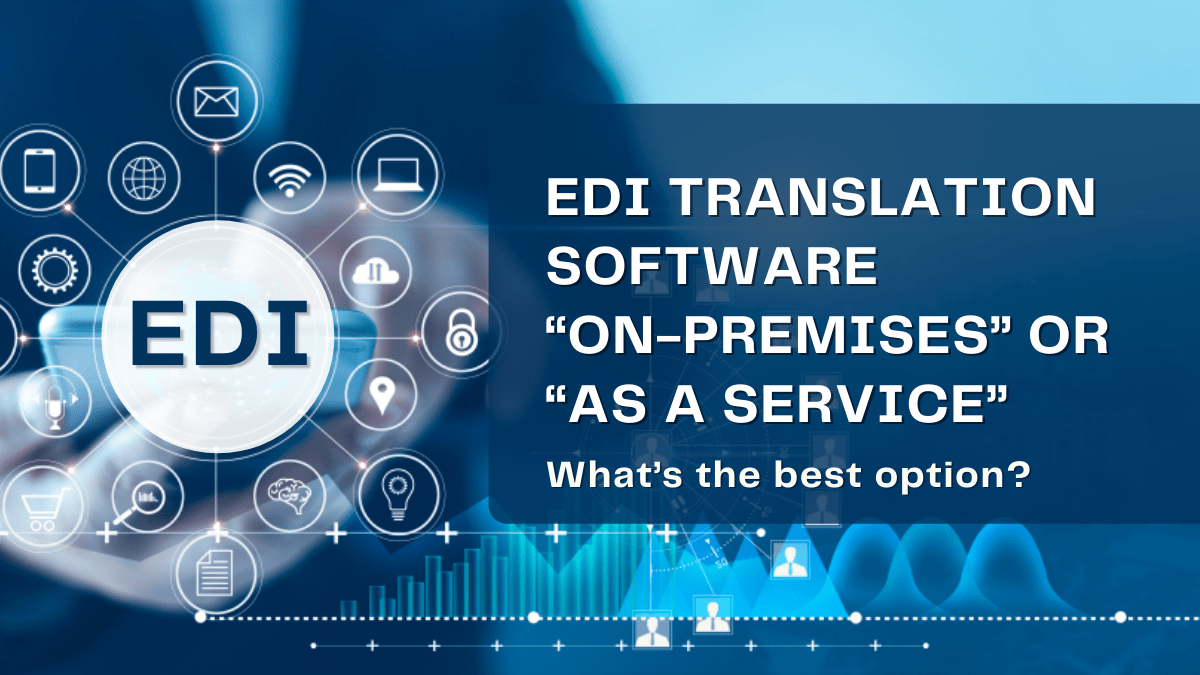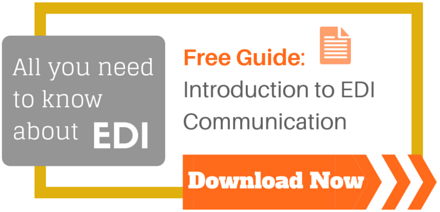Jan 2014

This post was updated to reflect current trends and information.
As soon as there is a requirement for EDI implementation and integration, company executives, along with their IT personnel, begin by determining how they will comply with their EDI business partner to exchange EDI documents. They will need to acquire EDI translation software, initiate testing, and so on. This however is a complex and lengthy process, which many executives do not look forward to. Difficult questions arise, such as, “Shall we outsource to an EDI service provider? Shall we do it ourselves “on-premises”? Shall we do the translation and conversion of EDI “as a service” using an outside provider?
Which of these options is the best and most affordable way to go?”
Why Do We Need To Translate EDI
As you already know, EDI (Electronic Data Interchange) is the standard to exchange business data between business partners in a very proprietary EDI format. Your business partner would send data such as a P/O (EDI 850), an Inventory Inquiry/Advice (EDI 846), or any other EDI transaction, based on his own terminology of business parameters. It is then up to the “receiving party” to take the sender’s EDI data and information, translate it into a well-understood format, which the receiver’s system will be able to use and process. With EDI2XML, we translate the EDI format of incoming documents to a much simpler, more structured XML format so humans, namely the IT developers, and systems can easily work with.
Translate EDI “On-premises”
Normally, translating incoming EDI documents “on-premises” requires a lot of parameters before launching such a project. As a starting point, a good level of expertise in EDI, EDI communication, and systems integration is required. Integrators should also have a fairly advanced knowledge and expertise in how the company’s software system (ERP, CRM, etc.) works and how to integrate and push data into that system.

Another major task for the “on-premises” translation is, in most cases, the need for the company to invest on hardware, software licenses, and services (internet, dedicated IP, VAN) to be able to exchange EDI documents with their business partner.
Useful Reading: What are the advantages of using EDI2XML?
Translate EDI “As a Service”
With the emergence of cloud-based IT services and the affordable plans offered by service providers, the ability to translate EDI “as a service” in the “cloud” and deliver the end result to the ultimate destination, has become a more productive approach.
Typically, an EDI service provider offering EDI translation “as a service” will:
– Act as an intermediary layer between the EDI sender and EDI receiver
– Receives the EDI incoming document (i.e. 850, 860, 864,…) on behalf of the “ultimate receiver”
– Extract the data received in EDI format and translate it into a standard format (i.e. XML)
– Transmit the XML data to its ultimate destination for Integration OR integrate directly into the software system of the ultimate receiver.
To send EDI documents out, the EDI service provider will be acting also as an intermediary hub between business partners and do the following:
– Receive data in XML format to be sent to the business partner from the sender through FTP or sFTP
– Translate data received and convert from XML to EDI format
– Transmit that EDI data to the destination
Dive into the world of EDI (Electronic Data Interchange) with our insightful video explanation. Explore the video
Advantages of EDI Translation “As a Service”
With the EDI translation in the cloud offered as a service, companies have a lot of great advantages:
– Quick implementation cycle
– Secured and proven platform to exchange EDI with partners
– No initial investment on hardware or software licenses
– Get up-and-running quickly: your projects are on-time and on-budget
– Use the wealth of expertise your EDI service provider has in EDI
– Let your team of IT professionals focus on integrating XML files into your system rather than learning EDI
– Predictable and static recurring monthly fee for the service
– Possibility to move to “on premises” mode any time
– Ability to integrate to your system directly without your internal IT resources
Discover how you can streamline and simplify your EDI projects with EDI2XML Fully Managed Services
The Best EDI Solution
Most companies usually lean towards the “on-premises” option when they have “internal policies” and security measures in place or are a large enterprise with their own team of IT experts.
The “as a service” option is much more advantageous for small to mid-sized enterprises, where they may have a lower number of exchanged EDI transactions.
As the “as a service” option’s low initial investment and quick deployment are attractive features, every situation is different and should be dealt with on a case-by-case basis with one of our EDI experts prior to making a final decision.











4 COMMENTS
Anonymous
28.02.2014 |Thanks for sharing your thoughts. I really appreciate your efforts and I am waiting for your further post thanks once again.
Stephanie Khoury
10.03.2014 |Thank-you! We love sharing our knowledge on EDI. If you have any specific topics you’d like to read about feel free to share them!
Anonymous
08.03.2014 |Thank you for sharing your info. I truly appreciate your efforts and I will be waiting for your further write ups thanks once again.
Evie
Stephanie Khoury
10.03.2014 |Thank-you Evie! We’re glad you enjoy reading our blogs. We roll out with new blogs weekly, so keep a look out!